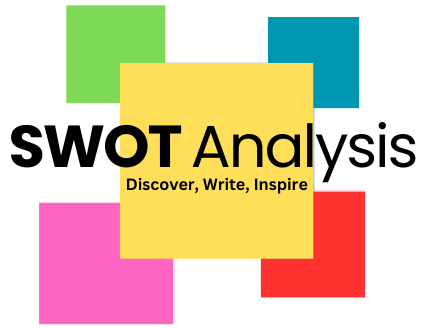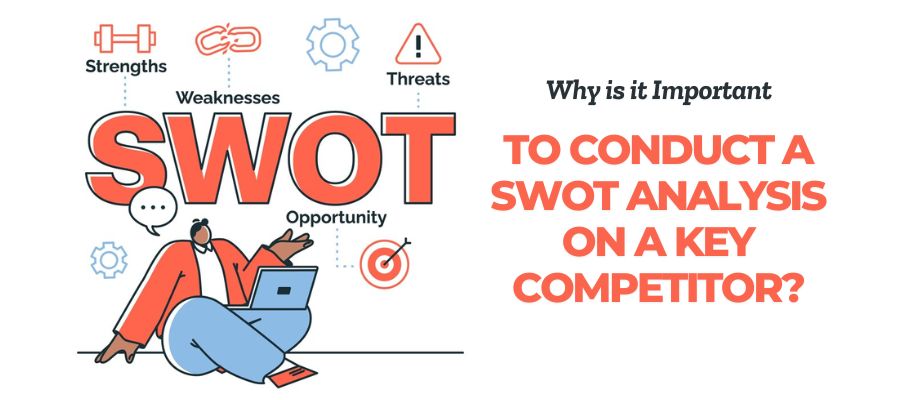A SWOT analysis is a helpful tool for businesses to understand their strengths and weaknesses. This article focuses on identifying weaknesses, which are internal problems that can hold a company back. By recognizing these weaknesses, businesses can create better strategies for improvement and growth.
Identifying Internal Weaknesses in a SWOT Analysis
Assessing Financial Instability
Financial instability can be a major weakness for any company. It may include high levels of debt, inconsistent cash flow, or insufficient funding for projects. Companies should regularly evaluate their financial health to identify potential issues. Here are some key indicators to consider:
- High debt-to-equity ratio
- Low profit margins
- Inconsistent revenue streams
Evaluating Operational Inefficiencies
Operational inefficiencies can hinder a company’s performance. These may arise from outdated processes, lack of training, or poor resource management. To identify these weaknesses, consider:
- Analyzing production timelines
- Reviewing employee productivity
- Assessing technology usage
| Indicator | Description |
|---|---|
| Production Delays | Time lost in manufacturing processes |
| Employee Turnover Rate | Percentage of staff leaving annually |
| Resource Utilization | Efficiency in using available assets |
Recognizing Poor Brand Reputation
A poor brand reputation can significantly impact a company’s success. This can stem from negative customer feedback, poor service, or product failures. Companies should actively monitor their brand image by:
- Conducting customer surveys
- Analyzing online reviews
- Engaging with customers on social media
Identifying internal weaknesses is crucial for a company to improve and grow. By addressing these issues, businesses can enhance their overall performance and competitiveness.
Understanding External Weaknesses in a SWOT Analysis
External weaknesses are factors outside a company that can hinder its success. Recognizing these weaknesses is crucial for strategic planning. Here are some common external weaknesses:
Impact of Market Changes
- Changes in consumer preferences can affect sales.
- Economic downturns may reduce overall demand.
- New competitors entering the market can take away market share.
Challenges with Supplier Relationships
- Unreliable suppliers can disrupt production.
- Price increases from suppliers can squeeze profit margins.
- Limited supplier options can lead to dependency issues.
Navigating Regulatory Hurdles
- New regulations can increase operational costs.
- Compliance issues can lead to legal troubles.
- Changes in laws can limit market opportunities.
Understanding these external weaknesses helps companies prepare for challenges and adapt their strategies accordingly. In a SWOT Analysis, Which of the Following Would Be Considered a Weakness of a Company? Identifying these factors is essential for long-term success.
Common Mistakes in Identifying Weaknesses
Overlooking Employee Turnover
One major mistake companies make is overlooking employee turnover. High turnover can indicate deeper issues within the organization, such as poor management or lack of growth opportunities. Ignoring this can lead to a loss of talent and increased costs.
Ignoring Customer Feedback
Another common error is ignoring customer feedback. Customers often provide valuable insights into a company’s weaknesses. If a business fails to listen, it may miss out on important areas for improvement, which can affect customer satisfaction and loyalty.
Underestimating Competitor Strengths
Lastly, many companies underestimate competitor strengths. Failing to recognize what competitors do well can lead to complacency. This oversight can prevent a company from adapting and improving its own strategies.
Identifying weaknesses is crucial for growth. By recognizing these common mistakes, companies can better prepare for challenges and enhance their overall performance.
| Mistake | Impact on Company |
|---|---|
| Overlooking Employee Turnover | Loss of talent and increased costs |
| Ignoring Customer Feedback | Decreased customer satisfaction |
| Underestimating Competitor Strengths | Complacency and missed opportunities |
Strategies to Address Weaknesses in a SWOT Analysis
Improving Financial Health
To tackle financial weaknesses, companies can:
- Create a budget to track spending.
- Seek additional funding through loans or investors.
- Cut unnecessary costs to improve cash flow.
Enhancing Operational Processes
Improving operations can lead to better efficiency. Consider these steps:
- Analyze current processes to find bottlenecks.
- Invest in training for employees to boost productivity.
- Adopt new technologies that streamline operations.
Strengthening Brand Image
A poor brand reputation can hurt a company. Here’s how to improve it:
- Engage with customers on social media to build trust.
- Solicit feedback and act on it to show responsiveness.
- Launch marketing campaigns that highlight positive aspects of the brand.
Addressing weaknesses is crucial for a company’s growth. By focusing on these strategies, businesses can turn challenges into opportunities for improvement.
| Strategy Type | Key Actions |
|---|---|
| Financial Health | Budgeting, Funding, Cost-Cutting |
| Operational Processes | Process Analysis, Employee Training, Technology |
| Brand Image | Customer Engagement, Feedback, Marketing |
The Role of Stakeholders in Identifying Weaknesses
Involving Employees in the Analysis
Engaging employees in the SWOT analysis is essential. They can provide valuable insights about the company’s internal operations. Here are some ways to involve them:
- Conduct surveys to gather opinions on workplace challenges.
- Hold brainstorming sessions to discuss potential weaknesses.
- Encourage open discussions during team meetings.
Gathering Insights from Customers
Customers are a key source of information about a company’s weaknesses. Their feedback can highlight areas needing improvement. Consider these methods:
- Use feedback forms to collect customer opinions.
- Analyze online reviews to identify common complaints.
- Conduct focus groups to discuss customer experiences.
Consulting Industry Experts
Industry experts can offer an outside perspective on a company’s weaknesses. Their experience can help identify issues that may not be visible internally. Here’s how to engage them:
- Schedule interviews with industry analysts.
- Attend industry conferences to network and gather insights.
- Collaborate with consultants who specialize in SWOT analysis.
Involving diverse stakeholders in the SWOT analysis process can lead to a more accurate understanding of weaknesses. Stakeholder analysis is crucial for successful change management. It involves identifying key players, assessing their influence, and prioritizing engagement.
By leveraging the perspectives of employees, customers, and experts, companies can better identify and address their weaknesses, leading to improved performance and competitiveness.
Read More: SWOT Analysis News: A Comprehensive Guide to Understand About It
Prioritizing Weaknesses in a SWOT Analysis
Identifying weaknesses is just the first step; prioritizing them is crucial for effective strategic planning. Here’s how to do it:
Ranking by Impact on Business
- Assess the severity of each weakness. Consider how much it affects your overall performance.
- Identify critical areas that need immediate attention. Focus on weaknesses that could lead to significant losses.
- Use a scoring system to rank weaknesses based on their potential impact.
Focusing on Addressable Issues
- Determine which weaknesses can be realistically improved.
- Avoid getting sidetracked by issues that are too complex or costly to address right now.
- Set clear goals for improvement on the weaknesses you choose to tackle.
Balancing Short-term and Long-term Concerns
- Consider immediate fixes that can provide quick wins.
- Plan for long-term strategies that will strengthen your company over time.
- Regularly review your priorities to adapt to changing circumstances.
Prioritizing weaknesses helps companies focus their resources effectively, ensuring that they tackle the most pressing issues first. This approach not only improves performance but also enhances overall strategic planning.
By following these steps, companies can ensure they are addressing the right weaknesses at the right time, leading to better outcomes in their SWOT analysis.
Benefits of Identifying Weaknesses in a SWOT Analysis
Identifying weaknesses in a SWOT analysis is crucial for any company. Understanding these weaknesses can lead to better decision-making and strategic planning. Here are some key benefits:
Guiding Strategic Planning
- Helps in creating a focused action plan.
- Allows for resource allocation to areas needing improvement.
- Encourages proactive measures to mitigate risks.
Enhancing Competitive Advantage
- Identifying weaknesses can reveal opportunities for differentiation.
- Companies can develop strategies to turn weaknesses into strengths.
- Understanding competitors’ strengths can help in positioning.
Promoting Continuous Improvement
- Regularly assessing weaknesses fosters a culture of growth.
- Encourages feedback from employees and customers.
- Helps in setting measurable goals for improvement.
By recognizing and addressing weaknesses, companies can not only survive but thrive in competitive markets. This proactive approach is essential for long-term success.
| Benefit | Description |
|---|---|
| Strategic Planning | Focused action plans and resource allocation. |
| Competitive Advantage | Opportunities for differentiation and positioning. |
| Continuous Improvement | Fostering a culture of growth and feedback. |
Conclusion
In summary, understanding the weaknesses of a company is crucial for its growth and success. Weaknesses can hold a business back from reaching its full potential. By identifying these areas, companies can work on improving them. This process not only helps in making better decisions but also prepares the business to face challenges ahead. A SWOT analysis is a helpful tool in this journey, guiding companies to recognize their weaknesses and turn them into strengths. Ultimately, being aware of weaknesses allows a company to adapt and thrive in a competitive market.
Frequently Asked Questions
What is a SWOT analysis?
A SWOT analysis is a tool companies use to look at their strengths, weaknesses, opportunities, and threats. It helps them understand how they can improve and what challenges they might face.
Why is it important to identify weaknesses in a SWOT analysis?
Identifying weaknesses is crucial because it shows where a company can improve. This helps them stay competitive and avoid problems in the future.
How can a company recognize its weaknesses?
A company can identify its weaknesses by asking questions about its performance, getting feedback from employees and customers, and examining competitors’ actions.
What are some common mistakes when doing a SWOT analysis?
Common mistakes include not being honest about weaknesses, not involving enough people in the process, and failing to prioritize the issues that matter most.
How can a company address its weaknesses?
A company can work on its weaknesses by improving its financial health, enhancing its operations, and building a stronger brand image.
Who should be involved in a SWOT analysis?
Various people should be involved, including employees from different levels, customers, and industry experts. This will give a broader view of the company’s situation.





